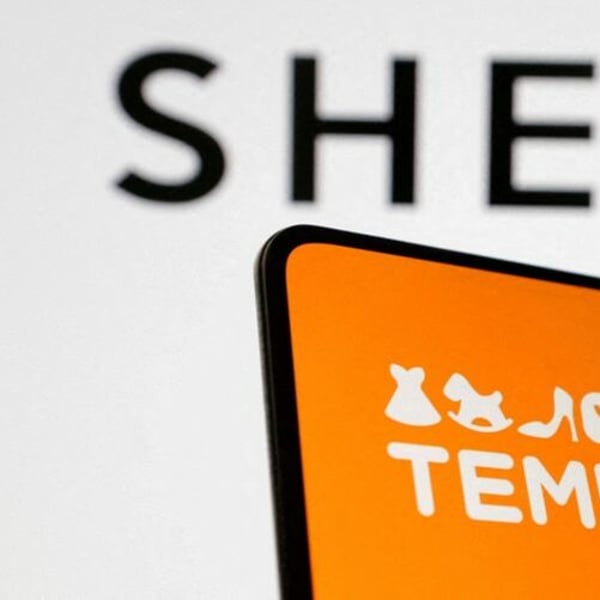By
Bloomberg
Published
July 16, 2025
For a decade, a Chinese tailor worked in a three -story building on the outskirts of Milan, working 13 hours a day making high -end garments for brands, including the Italian puppy label, Piana Loro.

The unidentified worker was paid outside the books, winning approximately € 1,500 ($ 1,742) per month, according to legal documents seen by Bloomberg, about the price of a Kashmir Smeter for Babies Loro Piana. It became part of a hidden underground workforce, used by third parties, which create luxury clothes for the most renowned fashion houses in Italy.
His case, which came to light after the head of the tailor stopped paying salaries and supposedly attacked him, became part of a continuous investigation of abuse of persistent workers in one of the most important industries in Italy.
For two years, prosecutors have tried to reform an export model where premium brands sell Italian fashion abroad at luxury prices, even when economic workshops proliferate around Milan, breaching labor standards in the capital of Italy style.
The repression, directed by the Corporate Court of Milan and the Unit of Labor Crimes of the Military Police of Carabinieri, has caught the contractors linked to five fashion labels known as Valentino, Armani and Dior.
Loro Piana, owned by the French luxury power LVMH Moët Hennessy Louis Vuitton Se, became the last on Monday and was placed under judicial supervision for up to one year.
“There is already a reputation problem in the fashion industry, which began with spiral prices for no reason,” said Stefania Saviolo, a fashion and luxury management professor at the University of Bocconi in Milan. “These investigations not only damage the marks involved, but affect all facts in Italy as a system.”
Loro Piana, part of LVMH since 2013, denied irregularities and said he will cooperate with the authorities. The company said it terminated relations with the supplier within 24 hours after information on the existence of contractors.
The fragmented structure, mostly led by the family of high quality Italian manufacturing, “can raise challenges in transparency and supervision,” said Toni Belloni, president of LVMH Italy. The group has strengthened the controls and reviewed its internal letter, said Bloomberg News in a statement. “However, fragility areas remain, so we must work to improve our practices.”
The fashion industry is one of the largest in Italy, which represents around 96 billion euros in Made in Italy products in 2024, according to the Camera Nazionale Della Fashion industrial group. The vast majority are intended for foreign markets.
However, the case of the tailor shines a light on the treatment of workers who make garments that can cost thousands. He worked from 9 am to 10 pm daily at the end of 2024, when his “cappel” or boss, also a Chinese transplant, stopped paying him for unknown reasons, according to judicial documents.
After repeated demands of his salary, there was a confrontation. The employer hit the tailor and hit it repeatedly with an aluminum tube, according to the documents, which led to a criminal complaint.
The previous application efforts have not been able to eliminate labor abuses.
“These cases have increased in recent years, with more large groups that take control of smaller Italian companies and begin to outsource part of the production,” said Roberta Griffini, secretary of the Filctem Cgil Milano Union.
Responsibility is sometimes difficult to determine because subcontractors work for more than one fashion group, Griffini added.
The United Kingdom has also taken energetic measures against illegal workshops, particularly small factories operating in cities like Leicester. A 2021 report in the United Kingdom found that companies in numerous industries could not ensure that their supply chains were free of forced labor.
For fashion producers in Italy, the supply chain must be brief and monitored closely, Saviolo said of the University of Bocconi. Younger consumers in particular are paying more attention to the credibility of the brand.
Milan is the place of the extensive fashion industry in Italy, which houses around a quarter of the 600,000 fashion workers in the country in some 60,000 companies, according to Camera Nazionale Della Fashion.
The dense ecosystem of design studies, tanners and manufacturers of samples of the Lombardy region offers brands uniquely, but also protects what prosecutors called “a generalized manufacturing method” in which legitimate subcontractors repair the work of microfactory that operate from semi-leges industrial parks.
Chinese property companies constitute an important part of this complex. According to the Milan Chamber of Commerce, approximately 20% of the more than 10,000 textile workshops and Lombard Factories are owned by China. The area has attracted a large number of Chinese immigrants, driven by opportunities for small businesses, globalization of the fashion industry and growing family ties.
Judicial repression in Italy is developing against a global nervous scenario, with a demand falling and a tariff war led by the United States that threatens to magnify export costs.
The personal luxury goods industry, with a value of 364 billion euros, lost 50 million customers in 2023 and 2024, Bain estimated last year. The sector will be reduced by 2% and 5% this year, according to the June monitoring of the consulting firm.
Italy's fashion industry was already dealing with the fall in sales, inflation and international tensions. The brands squeezed for the softest demand and volatile costs have doubled in rapid “vicinity” orders to the Lombardy workshop belt to protect the margins.
That same strategy, prosecutors say, is feeding the race towards the bottom that the courts are now trying to stop.
The researchers tracked Loro Piana's knitted clothes to intermediaries that subcontracted to the factories where illegal migrants worked 90 hours a week and slept next to their sewing machines. The judges said the company “benefited negligently” of the illegal cost reduction.
The judicial administrator designated on Monday has the task of monitoring the progress of Loro Piana Management to address his supply chain.
The problems have been similar in other luxury brands, including the operations of Giorgio Armani, Dior Manufactures, Valentino Bags Lab and Alviero Martini: opaque layers of small subcontractors, paper security records and a work force of mostly undocumented Chinese migrants.
Armani, Dior and Alviero Martini were released from judicial supervision after implementing measures such as real -time suppliers audits. Valentino's unit, owned by Kering SA and Mayhola de Qatar, is still subject to court monitoring.
The Italian competition authority has also been involved. In May, an unfair practice probe in Dior closed, ensuring 2 million euros in funds for anti-exploitation initiatives and demanding the company to improve suppliers.
Dior then pointed out that no infraction was established and said he is dedicated to high standards of ethics and excellence.
Armani Group, still under investigation by the authority of competition on alleged unfair commercial practices, said that accusations have no merit and that their companies are cooperating with the authorities.
In Milan, the coordination has been clenched with an agreement in May between the prefecture of Milan, the fashion chamber, the unions and the leading brands. The PACT establishes a shared database of suppliers examined and compromises the signatories to regular certifications.
The result of the Piana de Loro case for now is based on updates in the bank in its progress.
As for the tailor, the prosecutor of Milan is now trying to legally hire him, according to a person familiar with the matter, who asked not to be appointed discussing a personal matter. This would require the employer to make pension contributions, pay taxes and provide standard benefits.










